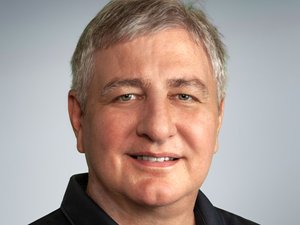At one point or another, we all get fed up with public transportation, especially when we take into account how unreliable it can be. Take the (now defunct) NextBus app, for instance. While meant to give you accurate real-time transit information, it malfunctioned almost on a daily basis. When it said that the next Circulator would arrive in 59 seconds, it really meant a minute and 20 seconds, resulting in those who are right around the corner to give up on their pursuit because they believed they would miss their bus. But what if there were something different, something more efficient, a product that could pull GPS information from vehicles, tweak that data before commuters receive it, and deliver a more concise depiction of when a bus will be arriving. Add that to a feature that allows you to favorite bus stops you frequent, making searching for your bus all the easier, and you've got yourself one truly invaluable product. I'd use that app, wouldn't you? Route Rider is the future, and it could be coming to a school near you.
Over the past few weeks I've been working very closely with the impressive community of innovative folks on University of Maryland's campus, intent on highlighting how the College Park school is truly a force to be reckoned with. But while covering the burgeoning student startup scene, one talented individual seemed to be flying under the radar: Eric Rosenberg. Craig Dye, Director of the VentureAccelerator program at UMD, boasted of his accomplishments. Elana Fine, Managing Director of the Dingman Center on campus, identified his company as one the university believes in. And now, after talking to him myself, I can honestly say that Eric Rosenberg's name is synonymous with success driven by passion.
Upon first engaging in a conversation with Rosenberg (Founder/Developer, 512 Technology; Computer Science '13) I immediately gathered that he was one humble guy. Despite his obvious talent and respect accrued from countless members of the university, Rosenberg would shy away from the compliments, instead directing all attention toward his startup. Discussing his company, 512 Technology, their Route Rider app and automatic passenger counter that's currently in the works, it was easy to see just how committed and excited Rosenberg is about his products.
Alongside his team of four (Brandon Gudenius, Hardware/Sensor Development, Aerospace Engineering '13; Ruth Ludlum, Art/Design, Psychology '13; Mike Noyes, Customer Development/Sales, Civil Engineering '14; Justin Kruskal, Software Development, Computer Science and Physics '13), Rosenberg has developed a way to improve the transit we love to hate, solidified a contract with his university, and is currently talking to University of Miami, Radford University, and the MTA (Maryland Transportation Authority) about the implementation of Route Rider to benefit their respective communities.
According to Rosenberg, Route Rider stands out from its competition as an app that minimizes the effort it takes you to get the information you want with unique, advantageous features. Do you only use three or four stops? Favorite them to cut down on your search time. What about a route, is there one you use more often than others? Favorite it. But what if you forget to favorite that stop you need to find, can you still easily access it? Yes, you can. Route Rider also keeps track of the recent stops and routes you've been at. There's a map you can simply navigate through, a QR scanner, and of course a list of the stops closest to you as well.
Already available in the app store for Android and iPhone, Route Rider has been viewed as a success, adopted by the university and soon other colleges and public transportation systems will follow in their footsteps. But that's not all 512 Technology has to offer.
After gaining an understanding of transportation problems through their work with Route Rider, Rosenberg and the rest of his team from UMD have sought out to help with yet another transit obstacle, aiming to reduce costs and improve service at the same time.
Their new project, the automatic passenger counter, is a device that can be placed on the doors of buses to detect every time a passenger enters and exits the vehicle. The product, which uses ultrasonic sensors to measure how long it takes for sound waves to reach the wall of the bus and back, can also determine which direction people are moving in.
The automatic passenger counter is due to decrease costs between 40 and 50 percent and allows for better fuel efficiency. For example, if you can identify what time certain routes have really low capacity, you can switch out big buses for smaller ones.
"We want people to stop making guesses and instead apply data analytics to their problems. That's what we supply," explained Rosenberg.
The first prototype of the automatic passenger counter was developed two weekends ago at a transit hackathon Rosenberg attended, the beginning of what he hopes will alter how we view public transportation today.
512 Technology's youthful, innovative minds are tackling the transit world, and so far, they're doing one hell of a job.




